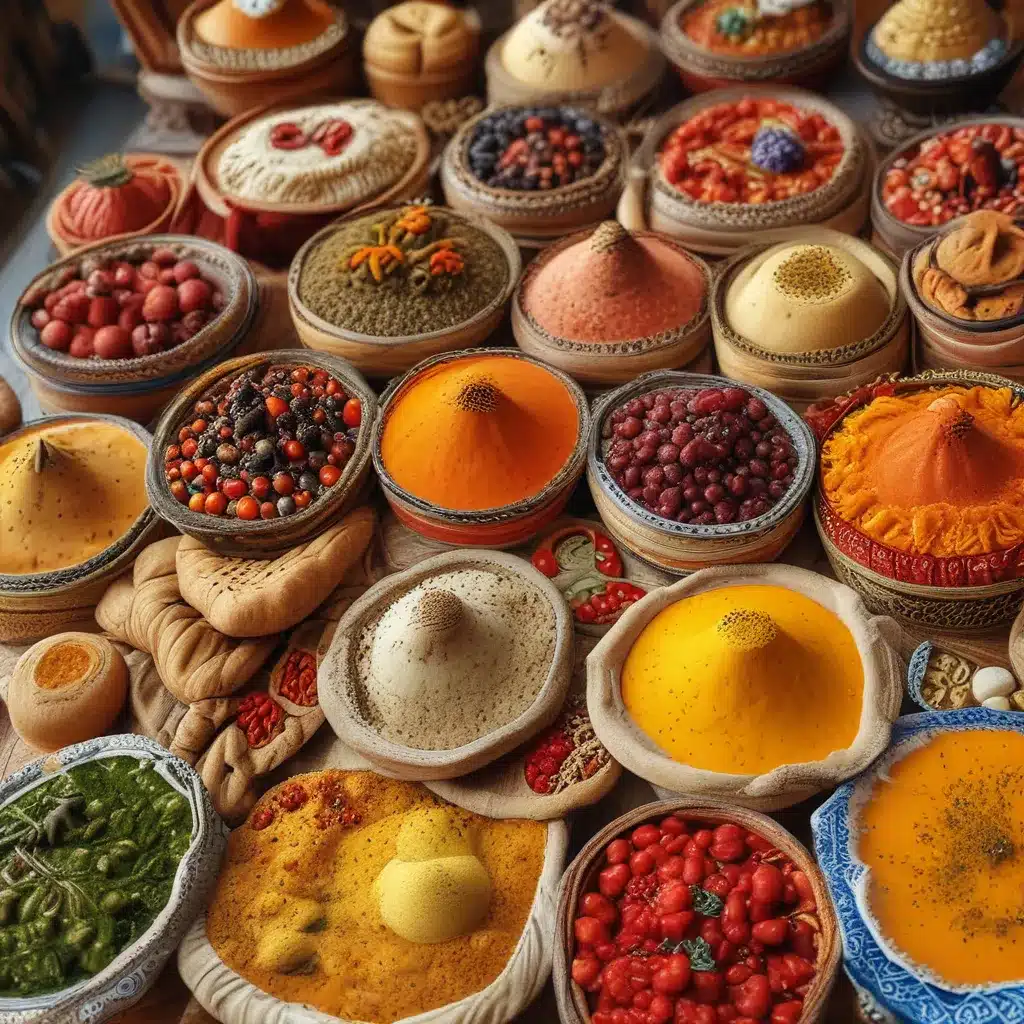
Rediscovering the Fragrant Spices of a Distant Land
I’ll never forget the day I stumbled upon Ahmed’s doorstep in South Minneapolis. The scent that came wafting out, a heady blend of garlic, spices, and warm, comforting aromas, instantly transported me to a far-off land – the vibrant, sun-drenched region of North Africa. As Ahmed welcomed me into his kitchen and shared the names of the dishes he was preparing, I was captivated, my senses awakened to the incredible flavors of this fascinating culinary tradition.
From that moment on, I became obsessed with exploring the tastes of North Africa. I dove headfirst into recipe books, food blogs, and travel guides, eager to uncover the secrets of this ancient, yet endlessly complex cuisine. And let me tell you, the more I learned, the more I was enamored by the depth and diversity of North African flavors.
Uncovering the Rich Tapestry of North African Cuisine
North Africa, or the Maghreb as it’s often called, is a region that encompasses countries like Morocco, Algeria, Tunisia, Libya, and Mauritania. Bounded by the Sahara Desert to the south and the Mediterranean Sea to the north, this area has a unique culinary heritage that has been shaped by centuries of cultural exchange and geographical influences.
The traditional foods of North Africa are a testament to the resourcefulness and ingenuity of the Berber tribes who once roamed the region nomadically. Couscous, olives, and dates are just a few of the staples that have endured, reflecting the region’s reliance on local ingredients like wheat, legumes, and honey. But over the centuries, as seafaring explorers and traders from across the Mediterranean and beyond arrived on North African shores, the cuisine underwent a remarkable transformation, incorporating new flavors and techniques.
Today, the flavors of North Africa are a harmonious blend of traditional and international influences, resulting in a culinary landscape that is both deeply rooted in the past and remarkably contemporary. From the refined, spice-infused dishes of Morocco to the fiery, herb-laced creations of Algeria, each country in the region has its own distinct gastronomic identity, waiting to be discovered.
Exploring the Wonders of Moroccan Cuisine
When it comes to North African cuisine, Morocco is perhaps the most renowned and celebrated. The country’s haute cuisine style is renowned for its elegant, nuanced use of spices, where delicate balances of flavors like saffron, nutmeg, cinnamon, and cumin create a symphony on the palate.
One of the true icons of Moroccan cuisine is the tagine, a slow-cooked stew named after the distinctive clay or ceramic dish in which it’s prepared. These hearty, well-spiced dishes can feature a variety of proteins, from tender lamb to succulent chicken, often combined with sweet and savory elements like prunes, apricots, or a drizzle of honey. The tagine is a true reflection of the Moroccan culinary ethos, where patience, care, and a deep respect for tradition come together to produce dishes that are both comforting and complex.
But Moroccan cuisine is far more than just the tagine. The country’s pastry tradition is equally impressive, with paper-thin dough called brik used to create savory or sweet pies and pastries. And let’s not forget the ubiquitous couscous, a fluffy, grain-based staple that can be dressed up with an array of vegetable, meat, or seafood toppings.
Discovering the Fiery Flavors of Algerian Cuisine
While Morocco may be the most famous of the North African culinary destinations, Algeria, the largest country in the region, has its own distinct and captivating flavor profile. Bearing the marks of its French colonial past and the influence of its large Jewish population, Algerian cuisine is often characterized by bold, spicy notes that pack a punch.
Harissa, a fiery chili paste, is a fundamental component of Algerian cooking, adding a signature heat and complexity to countless dishes. But the seasoning arsenal extends far beyond harissa, with spices like aniseed, black pepper, cumin, cloves, and wild parsley all playing pivotal roles in the flavor profile.
The coastal regions of Algeria are particularly renowned for their vibrant, spice-laden seafood and vegetable-based dishes, while the more inland, Berber-influenced areas maintain a more pared-down, yet no less delicious, culinary tradition. One thing is certain: whether you’re savoring a fragrant lamb stew or a zesty fish tagine, the flavors of Algeria are sure to leave a lasting impression.
Embracing the Diverse Tastes of North Africa
As I delve deeper into the culinary wonders of North Africa, I’m continually struck by the region’s remarkable diversity. From the refined, subtle elegance of Moroccan cuisine to the bold, fiery flavors of Algeria, each country in this vast, sun-drenched region has its own unique gastronomic identity.
And the best part? You don’t have to travel to North Africa to experience these incredible flavors. Thanks to the growing global interest in North African cuisine, restaurants like El Bahia in New York City are bringing the finest tastes of the Maghreb right to your doorstep.
So whether you’re craving a fragrant tagine, a fluffy couscous dish, or a vibrant North African-inspired salad, the flavors of this captivating region are just waiting to be discovered. So why not take a culinary journey to North Africa, one delicious bite at a time?


